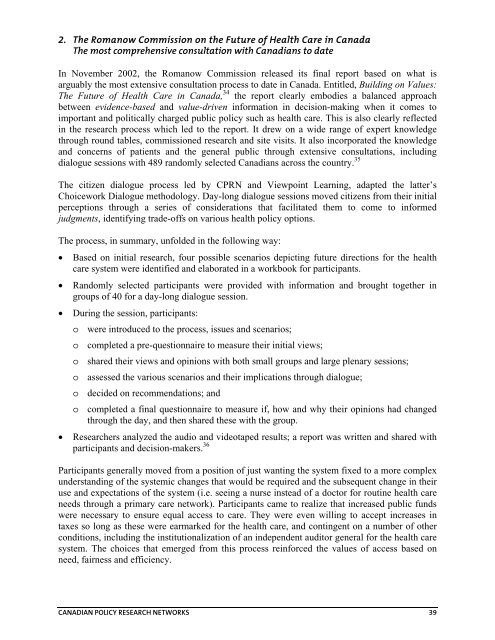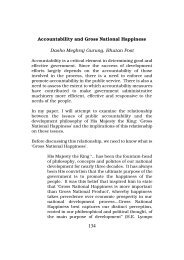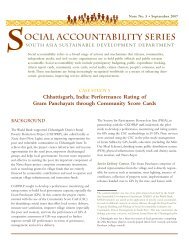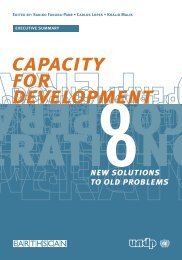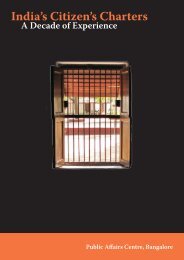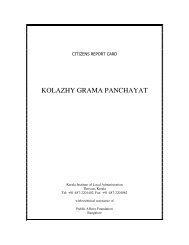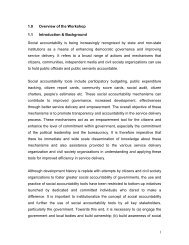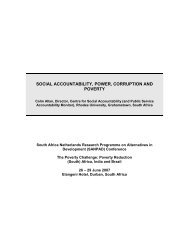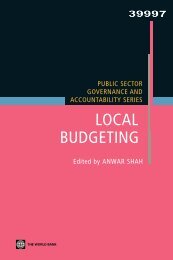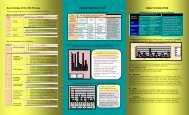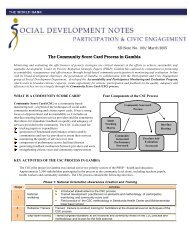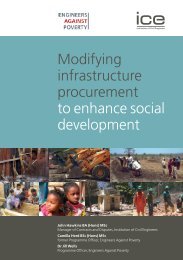Handbook on Citizen Engagement: Beyond Consultation - SASANet
Handbook on Citizen Engagement: Beyond Consultation - SASANet
Handbook on Citizen Engagement: Beyond Consultation - SASANet
- No tags were found...
Create successful ePaper yourself
Turn your PDF publications into a flip-book with our unique Google optimized e-Paper software.
2. The Romanow Commissi<strong>on</strong> <strong>on</strong> the Future of Health Care in CanadaThe most comprehensive c<strong>on</strong>sultati<strong>on</strong> with Canadians to dateIn November 2002, the Romanow Commissi<strong>on</strong> released its final report based <strong>on</strong> what isarguably the most extensive c<strong>on</strong>sultati<strong>on</strong> process to date in Canada. Entitled, Building <strong>on</strong> Values:The Future of Health Care in Canada, 34 the report clearly embodies a balanced approachbetween evidence-based and value-driven informati<strong>on</strong> in decisi<strong>on</strong>-making when it comes toimportant and politically charged public policy such as health care. This is also clearly reflectedin the research process which led to the report. It drew <strong>on</strong> a wide range of expert knowledgethrough round tables, commissi<strong>on</strong>ed research and site visits. It also incorporated the knowledgeand c<strong>on</strong>cerns of patients and the general public through extensive c<strong>on</strong>sultati<strong>on</strong>s, includingdialogue sessi<strong>on</strong>s with 489 randomly selected Canadians across the country. 35The citizen dialogue process led by CPRN and Viewpoint Learning, adapted the latter’sChoicework Dialogue methodology. Day-l<strong>on</strong>g dialogue sessi<strong>on</strong>s moved citizens from their initialpercepti<strong>on</strong>s through a series of c<strong>on</strong>siderati<strong>on</strong>s that facilitated them to come to informedjudgments, identifying trade-offs <strong>on</strong> various health policy opti<strong>on</strong>s.The process, in summary, unfolded in the following way:• Based <strong>on</strong> initial research, four possible scenarios depicting future directi<strong>on</strong>s for the healthcare system were identified and elaborated in a workbook for participants.• Randomly selected participants were provided with informati<strong>on</strong> and brought together ingroups of 40 for a day-l<strong>on</strong>g dialogue sessi<strong>on</strong>.• During the sessi<strong>on</strong>, participants:o were introduced to the process, issues and scenarios;o completed a pre-questi<strong>on</strong>naire to measure their initial views;o shared their views and opini<strong>on</strong>s with both small groups and large plenary sessi<strong>on</strong>s;o assessed the various scenarios and their implicati<strong>on</strong>s through dialogue;o decided <strong>on</strong> recommendati<strong>on</strong>s; ando completed a final questi<strong>on</strong>naire to measure if, how and why their opini<strong>on</strong>s had changedthrough the day, and then shared these with the group.• Researchers analyzed the audio and videotaped results; a report was written and shared withparticipants and decisi<strong>on</strong>-makers. 36Participants generally moved from a positi<strong>on</strong> of just wanting the system fixed to a more complexunderstanding of the systemic changes that would be required and the subsequent change in theiruse and expectati<strong>on</strong>s of the system (i.e. seeing a nurse instead of a doctor for routine health careneeds through a primary care network). Participants came to realize that increased public fundswere necessary to ensure equal access to care. They were even willing to accept increases intaxes so l<strong>on</strong>g as these were earmarked for the health care, and c<strong>on</strong>tingent <strong>on</strong> a number of otherc<strong>on</strong>diti<strong>on</strong>s, including the instituti<strong>on</strong>alizati<strong>on</strong> of an independent auditor general for the health caresystem. The choices that emerged from this process reinforced the values of access based <strong>on</strong>need, fairness and efficiency.CANADIAN POLICY RESEARCH NETWORKS 39


